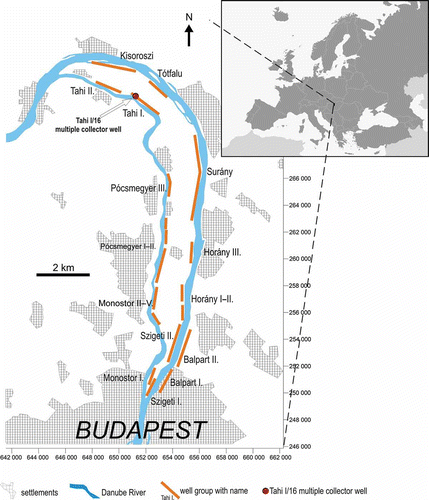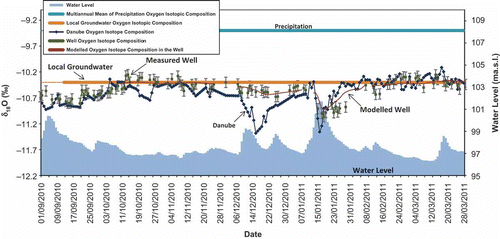Figures & data
Fig. 1 Location of Szentendre Island and the studied production well. Coordinates in EOV (Hungarian National Grid).

Fig. 2 Conceptual geological model of the Szentendre Island (modified after Góczán Citation1955).

Fig. 3 Conceptual model of water flow to the collector well (CDanube is the variable oxygen-isotope composition in time in the Danube River; CDanube after leaking is the variable oxygen-isotopic composition in time after leaking through the bank observed in the collector well; Clocal groundwater is the constant oxygen-isotope composition in time in local groundwater; and γ is the proportion of Danube River water in the collector well, while 1–γ is the proportion of local groundwater in that well).

Fig. 4 Water level in the Danube River and observed oxygen-isotope compositions of the Danube water, precipitation, local groundwater and water in the collector well, with modelled values of isotope content in the collector well for the time period 1 September 2010–31 March 2011 (in the case of high amounts of snowmelt water, which yields higher water levels, the oxygen isotopic composition is more negative).

Table 1 Summary of the resulting parameters (mean transit time of water between the Danube River and the collector well, and the proportion of Danube water in that well) found by modelling oxygen peaks in the Danube water in cases of medium and high Danube water levels (see ).
